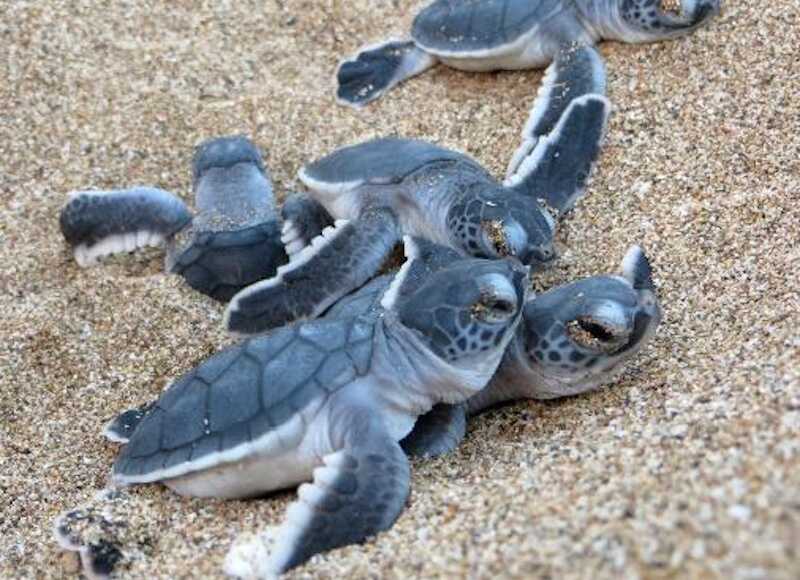The goal of the center is to welcome and treat injured turtles, as well as to raise public awareness about their conservation. To expedite its opening, the Oulanga na Nyamba association has launched a call for donations.
« La Kaz’a Nyamba » is the name of the upcoming sanctuary for turtles in Petite-Terre, created by the Oulanga na Nyamba association, which has been working for 26 years to protect and enhance knowledge about sea turtles in Mayotte.
A refuge for endangered reptiles.
Over time, the association has built trusting relationships with local residents and its partners, culminating in the realization of its most ambitious project: La Kaz’a Nyamba. This care center will be located on Boulevard des Crabes in Petite-Terre, by the mudflats of the badamiers, and will be integrated into the playground and sports area of the boulevard. In a specially designed space, featuring six tanks connected to a pumping station, a laboratory dedicated to care, and a 50 m² public area, the caretakers aim to make this center both a refuge for turtles and a place for public engagement.
« Veterinarians will rotate, and daily, animal caretakers will take care of the turtles and maintain the space’s cleanliness. There will be two separate areas: one for welcoming the public, where guides will give tours of the site as a museum with a dedicated scenography on the discovery of the sea turtle of Mayotte, and another for care, » says Jessica Coulon, ecotourism mission officer for the sea turtle.
Pollution, stray dog attacks, poaching.
In the lagoon and on the land of the 101st French department, threats are numerous, and the injuries sustained by the turtles can be diverse: collisions with boats, pollution (plastics, hydrocarbons), attacks by stray dogs, and poaching are the main ones on the « Island of Fragrances. » Due to plastic, « we sometimes find turtles floating in the lagoon, » says the mission officer. « Turtles ingest a lot of plastic, which can block their intestines and prevent them from feeding. We find many turtles stranded on the beaches. » But the turtles are not out of danger with this rampant human activity. When the females lay their eggs on the island’s beaches, hidden from view in the dark, they are often attacked by stray dogs. « If we find them in time, we can try to treat them.
And poaching only amplifies their vulnerability. « Poaching is more complicated because they shouldn’t be fully cut up. It has happened before that the poacher fled before finishing cutting the turtle, » admits the marine turtle specialist. Fishing is also a cause of the injuries they suffer. « When turtles bite the hooks and swallow them, we try to determine if it’s possible to operate on the turtle to remove the hook. » Sea turtles are also victims of diseases, which scientists have not yet fully identified. One of the goals of the care center is to better understand these diseases.
Care tailored to each turtle.
While green turtles and hawksbill turtles are the most frequently observed, all marine turtles will be welcomed. « Green turtles and hawksbill turtles are the ones we have most often and they breed in Mayotte, so we frequently find them on the beaches. Recently, we had a small loggerhead turtle in care for a few weeks, which is the third species we regularly see in Mayotte. The leatherback turtle is mostly observed offshore, sometimes just passing by, and to date, there have only been two documented sightings of the olive ridley turtle in Mayotte’s waters. » Welcoming any injured turtle or one in a concerning state of health, the Oulanga na Nyamba association is excited: « There will be room for everyone! » Once healed, the turtles will be released back into their natural environment.
« We’re already caring for them, but without a dedicated care center. »
Thanks to the Mahoran marine mammal and sea turtle stranding network (REMMAT), which allows the reporting of distressed or poached turtles, the Oulanga na Nyamba association can quantify the number of turtle shells found and gain a better understanding of the poaching devastation on the island. « The goal in the event of an alert is to intervene as quickly as possible, secure the turtle, and move it if it needs treatment, X-rays, or antibiotics, » explains the association. Until now, the association and its partners have been « making do with limited resources. » The construction of a shelter for these endangered turtle species has become a necessity for their protection and survival. « We already care for them with the help of veterinarians, but without a care center. We make do with what we have, but with Kaz’a Nyamba, we will be able to care for them from A to Z until they are released back into the wild. That’s the goal for all the turtles. »
Although funding for the care center’s construction was secured relatively early, the global COVID-19 pandemic and the war in Ukraine delayed the process, even discouraging potential funders. « The project was delayed due to these international and local events, and funders could not wait. The price of wood rose significantly, and we couldn’t anticipate that, » explains the project manager. Faced with these unforeseen funding losses, the association is seeking to raise an additional €400,000 from a total budget of over €3 million to continue the center’s construction. If the fundraising campaign is successful, Kaz’a Nyamba, built entirely from sustainable materials, could be completed by the end of 2025.
Source: lejournaldemayotte




